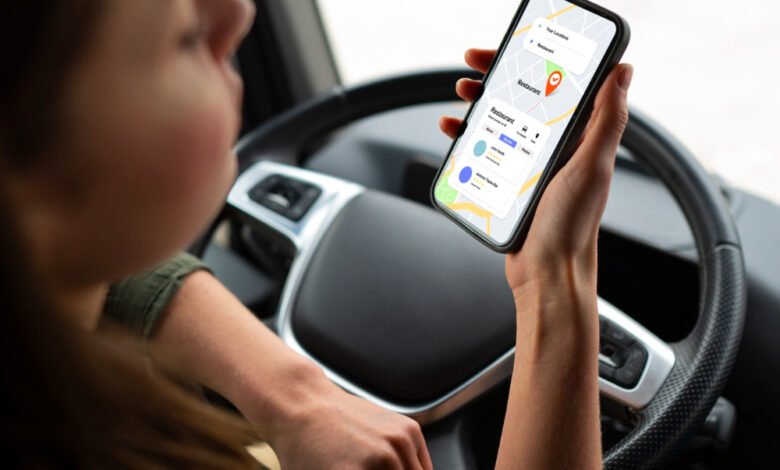Overcoming Challenges in Developing a Future-Ready Uber Clone

The ride-hailing industry has witnessed unprecedented growth in recent years, driven by the success of apps like Uber. For businesses looking to enter this space, developing an Uber clone app offers a promising opportunity to tap into the on-demand economy. However, building a future-ready Uber clone is not without its challenges. From integrating advanced technology to meeting user expectations, businesses must overcome several obstacles to deliver a high-quality product.
In this blog, we’ll explore the key challenges in developing a future-ready Uber clone app and provide practical strategies to overcome them.
1. Understanding the Market Dynamics
The Challenge
The on-demand transportation industry is highly competitive, with new players entering the market regularly. Understanding user needs, market trends, and regional requirements is crucial but challenging.
How to Overcome
- Conduct Market Research: Analyze your target audience, including their preferences, pain points, and spending habits.
- Study Competitors: Evaluate existing ride-hailing apps to identify gaps in services and potential areas for innovation.
- Regional Adaptation: Customize your app to address local transportation rules, payment preferences, and cultural nuances.
2. Building a Scalable Architecture
The Challenge
As your app grows, it must handle an increasing number of users, service providers, and real-time operations without compromising performance.
How to Overcome
- Choose a Robust Technology Stack: Use scalable technologies like Node.js, Python, and Kubernetes to support growth.
- Adopt Cloud Solutions: Leverage cloud platforms such as AWS or Google Cloud to manage server demands efficiently.
- Microservices Architecture: Break the app into smaller, manageable components that can be scaled independently.
3. Ensuring Real-Time Functionality
The Challenge
Real-time features like live tracking, booking updates, and instant notifications are critical for a seamless user experience but require advanced technical implementation.
How to Overcome
- GPS Integration: Use APIs like Google Maps or Mapbox for accurate location tracking.
- Real-Time Database: Implement Firebase or similar databases for instant data synchronization.
- Low-Latency Communication: Optimize server communication to reduce delays in notifications and updates.
4. Implementing Secure Payment Systems
The Challenge
A significant challenge is integrating multiple payment options while ensuring security and compliance with global and local regulations.
How to Overcome
- Payment Gateway Integration: Incorporate secure gateways like Stripe, PayPal, and Razorpay to offer diverse payment options.
- PCI Compliance: Ensure your app complies with Payment Card Industry Data Security Standards (PCI DSS).
- Fraud Detection: Use AI algorithms to detect and prevent fraudulent transactions.
5. Delivering a User-Friendly Design
The Challenge
An intuitive and visually appealing design is essential to attract and retain users. However, designing for multiple platforms (iOS, Android, and web) can be challenging.
How to Overcome
- Adopt a Mobile-First Approach: Prioritize mobile usability since most users access ride-hailing services via smartphones.
- Consistent UI/UX: Maintain a consistent design across all platforms for a cohesive user experience.
- Conduct Usability Testing: Gather feedback from real users during the design phase to identify and address pain points.
6. Managing Driver and Rider Onboarding
The Challenge
Attracting and onboarding a sufficient number of drivers while ensuring quality service is a critical challenge.
How to Overcome
- Streamlined Onboarding Process: Create a simple, quick process for driver registration, including document verification and training.
- Incentive Programs: Offer competitive incentives to attract new drivers and retain existing ones.
- Performance Monitoring: Use driver ratings and reviews to maintain service quality.
7. Handling Regulatory and Legal Compliance
The Challenge
Ride-hailing apps must comply with various regional regulations, including data privacy laws, labor laws, and transportation rules.
How to Overcome
- Stay Informed: Regularly update your knowledge of local regulations in your operating regions.
- Consult Legal Experts: Work with legal advisors to ensure compliance with data protection laws like GDPR and CCPA.
- Insurance Integration: Provide insurance coverage for drivers and riders as required by law.
8. Ensuring Data Privacy and Security
The Challenge
With increasing concerns about data breaches, safeguarding user data is a top priority.
How to Overcome
- Data Encryption: Encrypt sensitive information like payment details and personal data.
- Secure Authentication: Implement two-factor authentication (2FA) for added security.
- Regular Security Audits: Conduct periodic security checks to identify and address vulnerabilities.
9. Balancing Supply and Demand
The Challenge
Maintaining an optimal balance between drivers and riders is essential for smooth operations but can be challenging during peak hours or low-demand periods.
How to Overcome
- Dynamic Pricing: Introduce surge pricing during high-demand periods to incentivize more drivers to operate.
- Demand Prediction: Use AI-powered algorithms to predict demand patterns and adjust resources accordingly.
- Promotional Offers: Attract users during low-demand periods with discounts and offers.
10. Adopting Advanced Technologies for Future-Readiness
The Challenge
To remain competitive, your Uber clone app must incorporate emerging technologies like AI, machine learning, and blockchain.
How to Overcome
- AI-Powered Features: Use AI for route optimization, demand forecasting, and personalized user recommendations.
- Blockchain Integration: Ensure secure and transparent transactions with blockchain technology.
- Electric Vehicle Support: Prepare for the future of transportation by integrating electric and autonomous vehicle compatibility.
11. Ensuring Seamless Communication
The Challenge
Effective communication between riders, drivers, and support teams is crucial for a positive user experience.
How to Overcome
- In-App Chat: Implement real-time chat functionality for riders and drivers to communicate directly.
- Customer Support: Provide 24/7 support through chatbots, email, or phone.
- Push Notifications: Use notifications to keep users informed about ride status, offers, and updates.
12. Marketing and User Acquisition
The Challenge
Launching the app successfully requires effective marketing to attract users and service providers.
How to Overcome
- Targeted Advertising: Use digital marketing channels like social media, Google Ads, and email campaigns to reach your audience.
- Referral Programs: Encourage user acquisition through referral incentives for both riders and drivers.
- Localized Campaigns: Focus on region-specific promotions to establish a strong local presence.
Conclusion
Developing a future-ready Uber clone app is a complex but rewarding endeavor. By addressing the challenges outlined in this blog, businesses can create a scalable, secure, and user-friendly platform that meets the demands of the on-demand economy.
The key lies in adopting advanced technologies, maintaining a customer-centric approach, and staying adaptable to market changes. With a well-planned strategy and the right development partner, your Uber clone app can become a cornerstone of success in the competitive ride-hailing industry.




